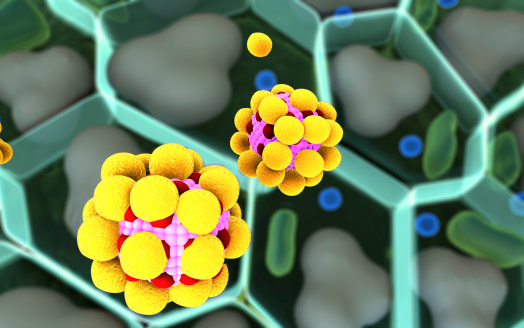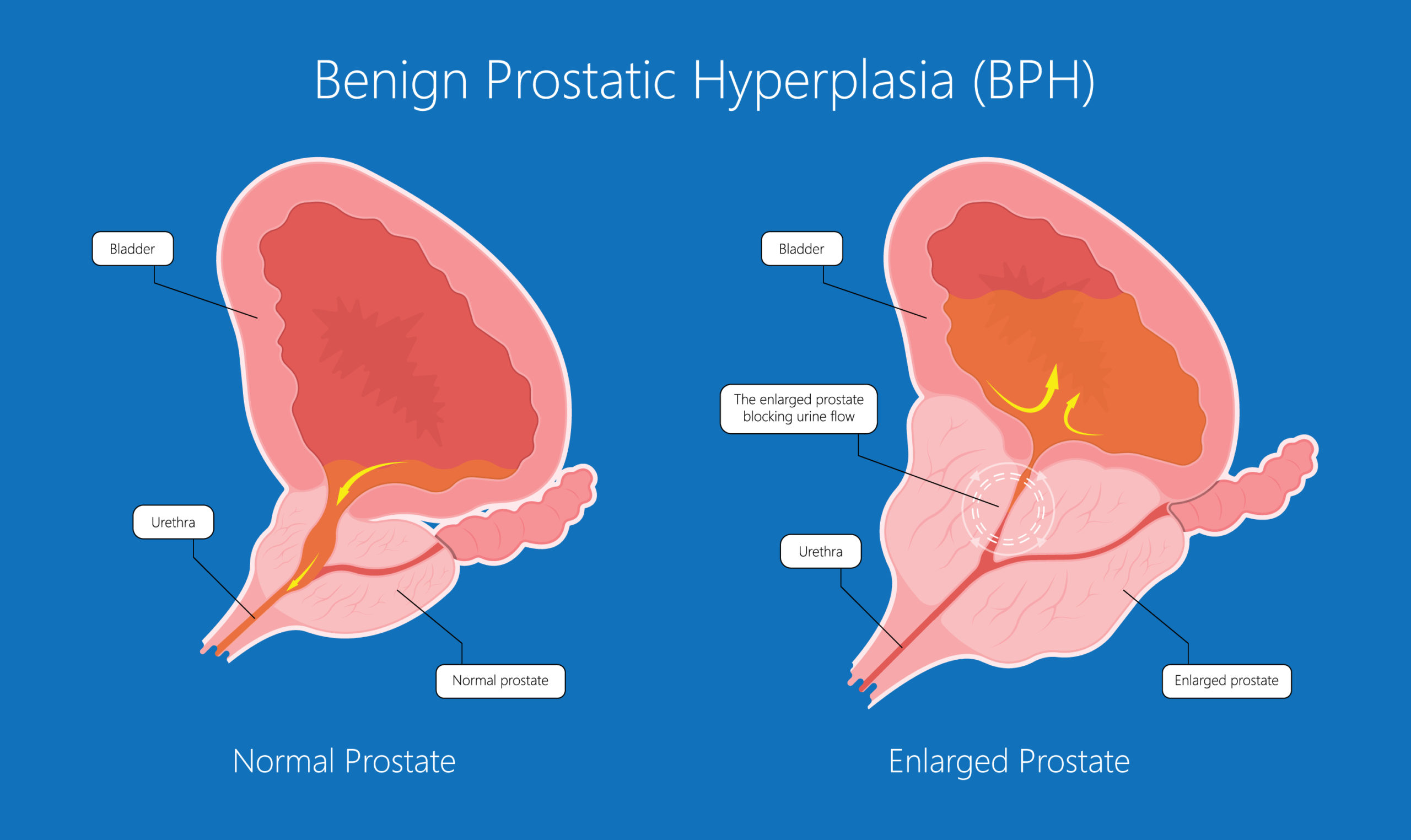
PEO’s: the “Real” Essential Fatty Acids, Demystified
April 28th, 2017When it comes to nutrition, there’s often a fair amount of controversy and confusion concerning research on a particular food ingredient or dietary supplement. For example, health-conscious consumers want to know: Should we drink coffee or tea? Or red wine? Eat dark chocolate? Use margarine instead of butter? How about omega-3 and omega-6 essential fatty acids (EFA’s – the topic of this article): what are they exactly, which ones do we need, and should we get them from fish oil or plants? Observing the plethora of health issues in our modern world that still remain unresolved despite the supposed promise of fish oil supplements, Brian Peskin, engineer and founder of Life-Systems Engineering Science has focused his recent career on getting to the bottom of the plant versus fish fatty acids controversy by thoroughly examining the medical literature, including results of countless studies. His verdict: discard the fish oil capsules, obtain high quality omega-3 and omega-6 EFA’s (which Peskin has re-labeled “Parent Essential Oils,” or “PEO’s”) from plant-based sources, and enjoy myriad health benefits as a byproduct.
In this article, we’ll clear up the confusion about EFA’s (in fact, we’ll see that fish oil supplements technically don’t contain EFA’s at all!) by examining the chemical definition of “essential fatty acids;” their functions and health benefits; general misconceptions and proven facts concerning EFA’s; the plants versus fish oil debate; and how to incorporate these essential nutrients into your daily health regimen.
Essential Fatty Acids 101
Let’s start out by precisely defining “essential fatty acid.” (But we’ll need to look at some chemistry, so please stick with me.) EFA’s are long-chain polyunsaturated fatty acids (PUFA’s), which means they are chains of multiple carbons (18 or more) containing more than one double bond. They are classified as “essential” because they cannot be synthesized in the body and must be obtained from the diet.
EFA’s and other PUFA’s are named according to the position of the first double bond in the carbon chain: in omega-6 fatty acids, the first double bond is located between the sixth and seventh carbon atoms from the methyl end of the fatty acid, and in omega-3’s, the first double bond is located between the third and fourth carbon atom from the methyl end. Fatty acid chains are not straight, but rather are crimped due to the presence of double bonds (as shown in Figure 1c).
The two — and only two — EFA’s are alpha-linolenic acid (ALA, an omega-3) and linoleic acid (LA, an omega-6), both containing 18 carbons. They are called “parent” compounds because they are the starting materials, or precursors, that the body uses to manufacture other longer-chain fatty acids (called “derivatives” or “metabolites”) with 20 or more carbons. For example, humans can synthesize longer-chain omega-6 fatty acids, such as dihomo-γ-linolenic acid (DGLA; 20 carbons) and arachidonic acid (AA; 20 carbons) from LA, and longer-chain omega-3 fatty acids, such as eicosapentaenoic acid (EPA; 20 carbons) and docosahexaenoic acid (DHA; 22 carbons) from ALA.
Figure reference: http://lpi.oregonstate.edu/mic/other-nutrients/essential-fatty-acids
Both parent compounds, or EFA’s, are found in plant sources: LA in leafy vegetables, seeds, nuts, grains, and vegetable oils (such as evening primrose oil, as well as in less desirable processed vegetable oils, such as corn and sunflower oils); and ALA in flaxseed, hemp, canola, soybeans and walnuts. Omega-3 fatty acid derivatives EPA and DHA, as mentioned, are synthesized endogenously from ALA, but can also be derived from cold water oily fish such as salmon, herring, mackerel, sardines and albacore tuna; they are also the major components in fish oil supplements (which we’ll discuss in more detail later).
So, by definition, there are only two essential fatty acids: ALA (parent omega-3) and LA (parent omega-6), both of which are plant-derived nutrients that must be obtained from the diet. Not only are they important in the normal functioning of all tissues of the body, but they also act as precursors to other fatty acids.
Technically, PEO = EFA
As mentioned, Brian Peskin has dedicated himself to the study of EFA’s; he’s pored over medical textbooks and relevant published journal articles to evaluate the health benefits of EFA derivatives (especially EPA and DHA) compared to parent compounds ALA and LA, and has made a determination in favor of the parents: he strongly advises against the use of derivative-containing fish oil supplements which may be ineffective, even detrimental to health, and recommends supplementation with nature’s essential starting materials, parent omega-3 (ALA) and parent omega-6 (LA). Peskin has re-labeled these — the only two — essential fatty acids “Parent Essential Oils” (“PEO’s”), mainly to avoid the confusion over and misuse of the term “EFA,” which is sometimes misleadingly or mistakenly applied to derivatives. For example, a Google search of “EFA’s” reveals many inappropriately labeled products on the market which are, in fact, derivative-containing fish oil capsules, like this one: [manufacturer name excluded] “Mega EFA Omega-3 EPA & DHA Fish Oil” — what a mouthful, and wrongly labeled “EFA.”
For our discussion, since we’ve already reviewed precise chemical definitions, “PEO” will be used interchangeably with “EFA;” “ALA” with “parent omega-3;” and “LA” with “parent omega-6.”
| Abbreviations: |
| PUFA: polyunsaturated fatty acid (EFA’s and derivatives are PUFA’s.) |
| EFA = essential fatty acid |
| PEO = parent essential oil |
| EFA = PEO, of which there are only two: |
| ALA = alpha-linolenic acid = parent omega-3 |
| LA = linoleic acid = parent omega-6 |
| Some EFA derivatives: |
| DGLA = dihomo-γ-linolenic acid (omega-6) |
| AA: arachidonic acid (omega-6) |
| EPA: eicosapentaenoic acid (omega-3) |
| DHA: docosahexaenoic acid (omega-3) |
Peskin has co-authored a book, along with Robert Rowen, MD, entitled “PEO Solution, Conquering Cancer, Diabetes and Heart Disease with Parent Essential Oils,” in which he outlines several interrelated facts as well as misconceptions concerning EFA’s and derivatives, which we’ll now discuss.
Not Enough Attention Paid to Parents!
It seems that when it comes to PUFA’s, the bulk of marketing and media emphasis has been unduly placed on derivatives (especially fish oil-derived EPA and DHA), not parents ALA or LA. Although derivatives provide an array of health benefits, parents are essential nutrients (remember, we are unable to synthesize them), and substantial published information supports their inclusion in a healthy diet. So why are parent omega-3 and parent omega-6 so important?
First, they play an integral role in the structure and function of the cell membrane, a thin lipid bilayer composed of two sheets of phospholipid molecules that form a continuous barrier around every cell (and we have 100 trillion of them) in the body. This membrane protects the cellular contents and internal machinery from the external environment while selectively allowing nutrients into, and waste products out of the cell. Research shows that fatty acids consumed in the diet become incorporated into the phospholipid bilayer and affect cell membrane composition and properties such as fluidity, flexibility, permeability, and enzyme activity. (1,2) So a diet rich in saturated fat will result in cell membranes that are structurally different and less fluid than those that incorporate EFA’s (2) (and that’s just one good reason to make the switch to EFA’s!).
Besides membrane composition and function, EFA’s in the lipid bilayer also play a role in transporting oxygen, necessary for cellular respiration and other vital processes, into the cell. An EFA deficiency resulting in lower availability of oxygen for cellular respiration may lead to health consequences, and Peskin believes that insufficient cellular oxygenation (hypoxia) is the prime cause of cancer. Peskin refers to parents as “oxygen magnets” that can stem cancer and other disease processes. EFA’s also act as precursors to bioactive mediators such as eicosanoids (including prostaglandins, thromboxanes, leukotrienes, etc.), chemical messengers that play critical roles in immune and inflammatory responses. They can also modulate the expression of various genes.
So we can see that parent compounds play many key cellular roles, despite the relative lack of popular and marketing emphasis compared with fish oil derivatives.
Omega-6 Fatty Acids Not Given Their Due Respect
It also appears that most of the popular attention has been placed on the supposed health benefits of the omega-3 series (especially derivatives), ignoring that unadulterated, high quality omega-6’s are also vital to good health. Omega-6 seem to have developed a bad reputation for a couple of reasons. The first involves the LA metabolite arachidonic acid (AA), thought to contribute to pro-inflammatory processes and heart disease. However, according to one researcher, “this perspective fails to consider several inconvenient facts,” (3) such as that dietary intake of LA does not significantly affect AA levels in the body. (3,4) “Virtually no evidence is available from randomized, controlled intervention studies among healthy, non-infant human beings to show that addition of LA to the diet increases the concentration of inflammatory markers.” (3) Myth debunked.
Another reputation detractor concerns the quality of omega-6 in the typical Western diet, which is, in two words, largely adulterated (chemically altered). LA in commercial cooking oils is typically highly modified in multi-step processes that include the use of solvents, high temperatures, and additives in order to hydrogenate or interesterify the fatty acids, resulting in products that last longer, but are dangerous to health, with adverse effects on cardiovascular health. (4) But unadulterated LA-rich oils reduce risk of cardiovascular disease and should be consumed as part of a healthy diet, (4) pointing to the need to eliminate hydrogenated vegetable oils and replace them with high quality oils such as safflower, sesame, and sunflower.
Even more so than saturated fat, Peskin believes that “the real culprits” responsible for the abundance of health problems in the modern world are highly processed, chemically altered fats, and that “good health requires a preponderance of [unadulterated, high quality] dietary parent omega-6,” with a higher ratio of omega-6 to omega-3 fatty acids. Ideally, this ratio should be between 1:1 and 4:1. (5)
The Body Only Partially Converts Parents to Derivatives, and That’s Enough
A medical fallacy concerning omega-3’s (that at least in part drives the success of the fish oil industry) is that ALA should ideally completely metabolize to EPA and DHA in the body, and that, since research has shown that conversion is limited in humans, then this must mean that most people are deficient in these longer-chain derivatives. This naive assumption is repeatedly challenged in Peskin’s book, in which he states that the “body makes derivatives as needed,” with conversion rates set naturally low. Only 5% of ALA is metabolized to EPA and even less (less than 1%) to DHA. (6) And for healthy individuals, these conversion rates should be sufficient to maintain tissue function. (7)
Consider that the net rate of DHA (the most abundant PUFA in the brain) consumed by the brain is only about 2 to 6 mg per day. (8) This underscores the fact that, although the body needs a certain level of derivatives for proper functioning, our physiology does not depend on the mega doses of DHA and EPA that many doctors prescribe in the form of fish oil; in fact, as we’ll see in the next section, ultra-high doses of derivatives could be doing us harm. According to Peskin, EPA and DHA act as “biological antifreeze to fish living in frigid waters. Humans don’t require such copious amounts because we have an internal temperature of 98.6 degrees F.”
Interestingly, a study comparing the effects of dietary patterns on omega-3 PUFA status found that women on vegan diets actually had higher blood levels of long-chain omega-3’s compared with fish-eaters, (9) which demonstrates that by adhering to a plant-based diet (rich in EFA’s), they manufactured ample DHA and EPA without consuming fish or fish oil.
Over-estimation of DHA and EPA Requirements Leads to Fish Oil Overdosing and its Consequences
As just explained, the body metabolizes ALA to longer-chain EPA and DHA to a limited degree that is sufficient to maintain normal tissue function, a fact that is often unrecognized, overlooked, or ignored as doctors prescribe excessive doses of fish oil in an attempt to improve cardiovascular and other health problems. This results in patients reaching supra-physiological blood levels of derivatives (dozens, even hundreds of times more than the body manufactures naturally, depending on the particular supplement and amount consumed), leading to unresolved or even exacerbated problems. Peskin argues that excess omega-3 derivatives end up in unusual places they don’t belong: skin, cardiovascular system, prostate, and breast tissue, where they can potentially lead to increased rates of prostate cancer, skin cancer, and heart disease. Recent large studies have in fact shown increased risk of prostate cancer in men with higher blood levels of long-chain omega-3 derivatives (but reduced risk of cancer with higher parent omega-6 (LA) levels). (10)
And although a large body of scientific research suggests that higher omega-3 fatty acid intake is associated with reductions in cardiovascular disease risk, other recent studies in the New England Journal of Medicine, (11) Journal of the American Medical Association, (12) and Archives of Internal Medicine (13) find the opposite: fish oil derivatives do not improve cardiovascular risk factors. (However, parent omega-3 (ALA) does lower the risk of heart disease, (6) as does parent omega-6 (LA). (4))
Nor does fish oil slow cognitive decline, as was previously thought. A large study performed at the National Eye Institute/National Institutes of Health tested the effect of various supplements, including omega-3’s, on cognitive function in over 3500 subjects (average age 73) and found no statistically significant effect. (14)
We can only conclude that fish oil is not all it’s cracked up to be.
Make the Switch – Your Health Depends Upon It
Earlier, we took a glimpse at the important biological roles parent compounds play on a cellular level: as major constituents of cell membranes, as precursors to chemical messengers, and as transporters of oxygen into the cell. On a whole-body level, EFA’s are cardio-protective; prevent certain types of cancer; and benefit normal brain development and function, inflammatory disorders, and diabetes, with the added cosmetic effect of improving skin, hair, and nails. But in order to be effective, sources of EFA’s must be organic and unprocessed and in the correct physiologic ratio. A plant-rich diet that includes ample amounts of natural foods such as ground flaxseeds, walnuts, leafy vegetables, seeds, nuts, and unprocessed vegetable oils will provide more than the necessary daily requirements for EFA’s. However, for those whose diets fall short, Peskin has formulated a product called PEO-Pro™ containing organic, unprocessed ingredients: evening primrose oil, sunflower oil, flax oil, pumpkin oil, and extra-virgin coconut oil, in a ratio of approximately 2:1 omega-6: omega-3. The recommended dose is four capsules per day, which provides almost 3 g of EFA’s.
We have just seen the “power of the parents” and hopefully unraveled the myths and cleared up the misconceptions concerning EFA’s and their derivatives. To sum up, here’s the ideal way to meet your requirements for these essential nutrients: eliminate both fish oil capsules and highly processed vegetable oils (and, for that matter, any processed foods) and replace them with plant-based sources of high quality, organic parent omega-3 (ALA) and organic, unprocessed parent omega-6, (LA) in the proper ratio. Enjoy vibrant health as a result.
For more information on PEO follow this link here: http://bit.ly/PEOCaps
References
- http://lpi.oregonstate.edu/mic/other-nutrients/essential-fatty-acids
- Hussein JS. Cell Membrane Fatty Acids and Health. International Journal of Pharmacy and Pharmaceutical Sciences.2013;5(3):38-46.
- Harris WS, Shearer GC Omega-6 fatty acids and cardiovascular disease: friend, not foe? Circulation. 2014 Oct 28;130(18):1562-4.
- Anton SD, Heekin K, Simkins C, Acosta A. Differential effects of adulterated versus unadulterated forms of linoleic acid on cardiovascular health. J Integr Med. 2013 Jan;11(1):2-10.
- Simopoulos AP. Essential fatty acids in health and chronic disease. Am J Clin Nutr.1999;70:560S-569S.
- Rajaram S. Health benefits of plant-derived α-linolenic acid. Am J Clin Nutr. 2014 Jul;100(1):443S-8S.
- Williams CM, Burdge G. Long-chain n-3 PUFA: plant v. marine sources. P Nutr Soc. 2006;65:42-50.
- Umhau JC, Zhou W, Carson RE, et al. Imaging incorporation of circulating docosahexaenoic acid into the human brain using positron emission tomography. J Lipid Res. 2009 Jul;50(7):1259-68.
- Welch AA, Shakya-Shrestha S, Lentjes MAH, Wareham NJ, Khaw KT. Dietary intake and status of n-3 polyunsaturated fatty acids in a population of fish-eating and non-fish-eating meat-eaters, vegetarians, and vegans and the precursor-product ratio of a-linolenic acid to long-chain n-3 polyunsaturated fatty acids: results from the EPIC-Norfolk cohort. Am J Clin Nutr. 2010;92:1040-1051.
- Brasky TM, Darke AK, Song X, et al. Plasma phospholipid fatty acids and prostate cancer risk in the SELECT trial. J Natl Cancer Inst. 2013 Aug 7;105(15):1132-41.
- Roncaglioni MC, Tombesi M, Avanzini F, et al. n-3 fatty acids in patients with multiple cardiovascular risk factors. N Engl J Med. 2013;368:1800-1808.
- Rizos EC, Ntzani EE, Bika E, Kostapanos MS, Elisaf MS. Association between omega-3 fatty acid supplementation and risk of major cardiovascular disease events: a systematic review and meta-analysis. JAMA. 2012;308:1024-1033.
- Kwak SM, Myung SK, Lee YJ. Efficacy of Omega-3 Fatty acid supplements (eicosapentaenoic acid and docosahexaenoic acid) in the secondary prevention of cardiovascular disease: a meta-analysis of randomized, double-blind, placebo-controlled trials. Arch Intern Med. 2012;172:986-994.
- Chew EY, Clemons TE, Agrón E, Launer LJ, Grodstein F, Bernstein PS; Age-Related Eye Disease Study 2 (AREDS2) Research Group. . Effect of Omega-3 Fatty Acids, Lutein/Zeaxanthin, or Other Nutrient Supplementation on Cognitive Function: The AREDS2 Randomized Clinical Trial. JAMA. 2015 Aug 25;314(8):791-801.








